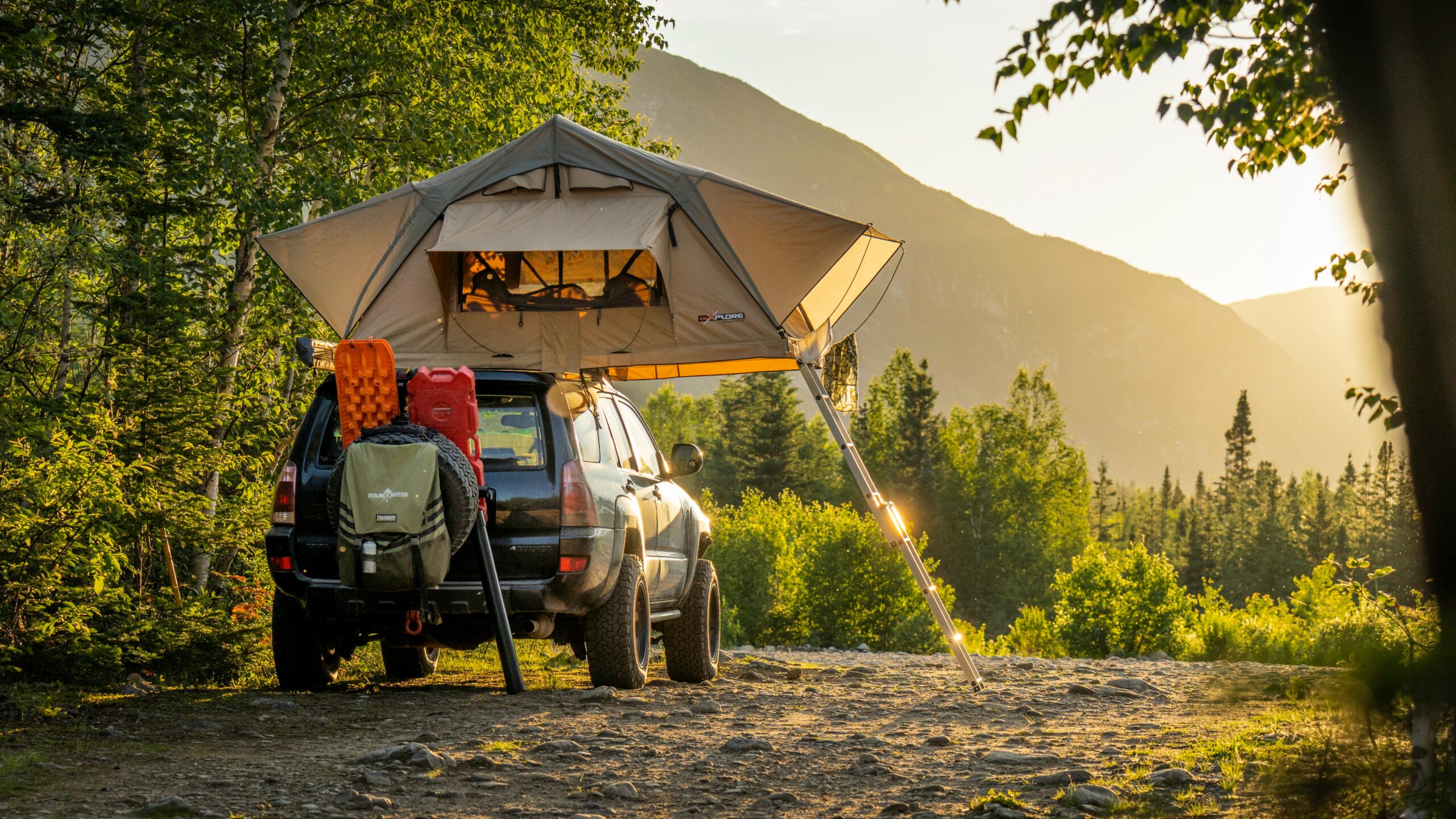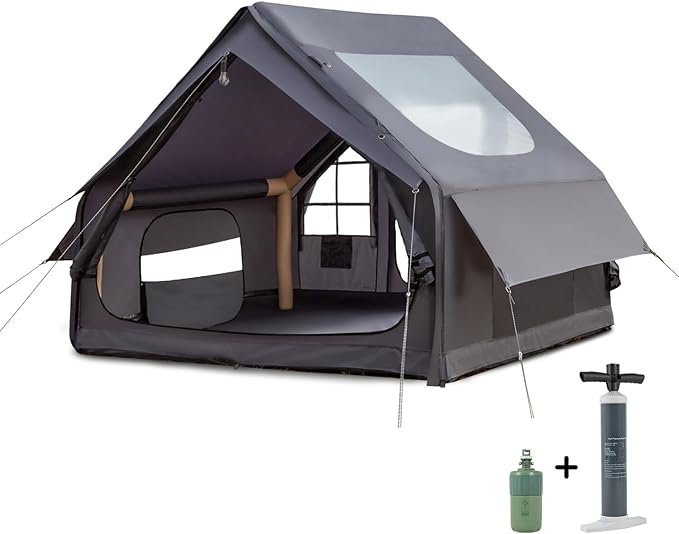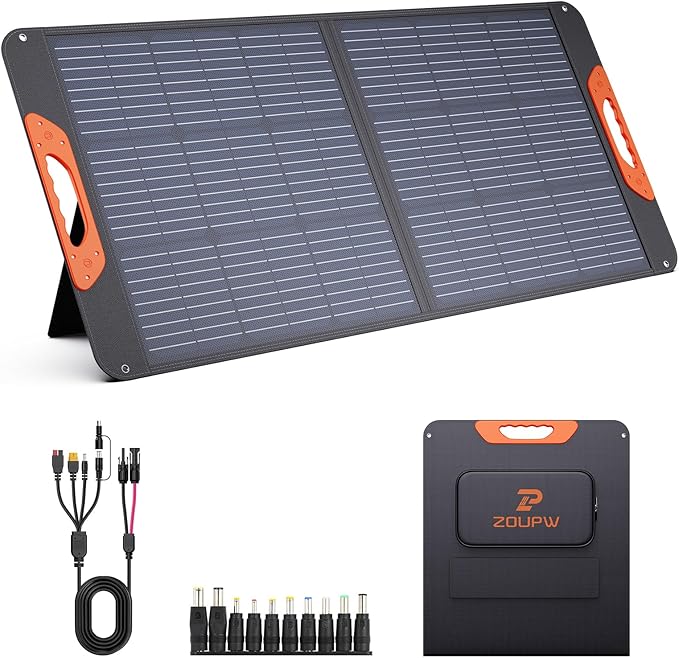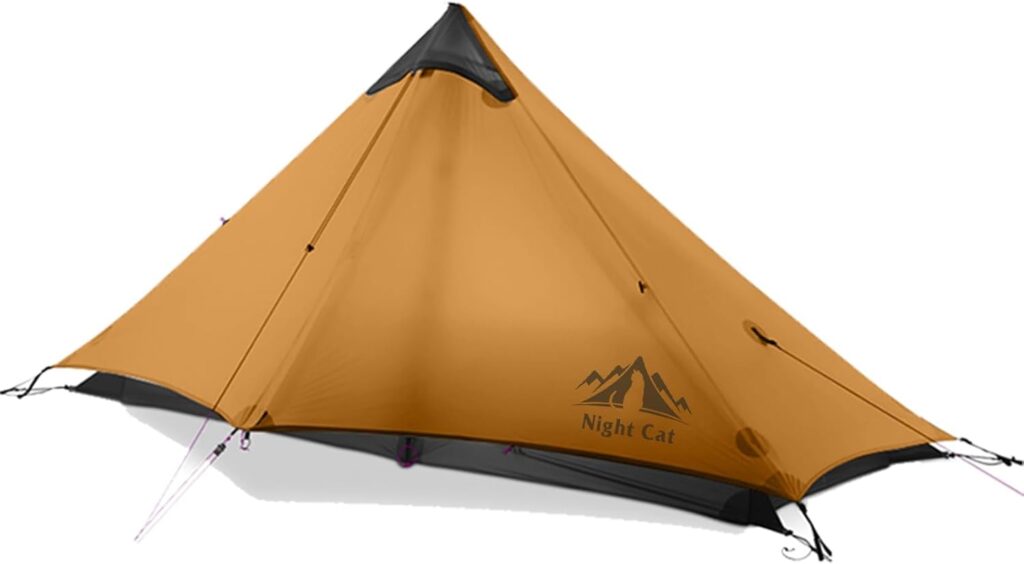
Smart Camping Canopies Solar Panels, LED Integration, and Tech Features
Camping no longer required a total disconnecting from contemporary comforts. The tranquility of nature and necessary technology that improves comfort, safety, and convenience are what today’s outdoor enthusiasts desire. Smart camping canopies are innovative shelters that include state-of-the-art technology without sacrificing the genuine camping experience.
By fusing conventional weather protection with contemporary features like solar charging capabilities, integrated LED lighting systems, and intelligent networking options, these creative canopies mark a substantial advancement in outdoor gear design. Knowing these technical advancements can change your outdoor experiences, regardless of whether you’re a weekend warrior or an avid backcountry adventurer.

Inflatable Camping Tent, with Electric Air Pump, 4 Season Waterproof Windproof, Clear Skylight & 420D Oxford Waterproof, Air Tent with Mesh Windows/Doors
The Evolution of Camping Technology
The main function of traditional camping canopies was to provide shelter from the weather. Even while this basic purpose is still essential, contemporary campers have higher expectations for their equipment. Simple improvements like portable power banks and lamps that ran on batteries marked the beginning of the incorporation of technology into camping gear.
But now, manufacturers have incorporated these technology right into the shelter. This development is a reflection of shifting camping expectations and demographics.
For employment, safety, or just to share their exploits on social media, today’s campers frequently need to keep connected.
These demands are met by smart canopies while preserving the weather resistance and durability that outdoor enthusiasts require.
This integration is now feasible without appreciably adding bulk or weight because to advancements in energy-efficient LED technology and lightweight, flexible solar panels. These clever features may be smoothly integrated into canopy designs without sacrificing weather resistance or structural integrity thanks to advanced materials and production processes.
Solar Panel Integration: Power Independence in Nature

100W Portable Solar Panel, Camping Essentials, 20V ETFE Foldable Solar Charger for Power Station,QC3.0 USB-A &Type-C Output,23.5% High Efficiency IP67 Waterproof for Camping RV Hurricane
Integrated solar panel technology is the foundation for advanced camping canopies. As a seamless power production system that operates as long as the sun is shining, these are not aftermarket upgrades; rather, they are integrated right into the canopy fabric or frame structure.
Flexible Solar Panel Technology: Thin-film solar panels used in contemporary smart canopies flex and bend with the canopy’s material. These panels maintain remarkable efficiency rates while being substantially lighter than conventional rigid solar panels. Because of their flexibility, they won’t shatter or crack when being set up, taken down, or in windy situations.
Power Output Capabilities: Depending on size and panel arrangement, modern smart canopies can provide anywhere from 50 to 200 watts. Throughout the day, this output is enough to power portable lighting systems, GPS units, cameras, smartphones, and tablets. Some larger canopies can even keep portable refrigeration units charged or power tiny appliances.
Weather Resistance: The canopy’s integrated solar panels are made to endure the same severe weather conditions. Reliable operation in a range of weather situations is ensured by impact-resistant surfaces, waterproof connections, and UV-resistant materials. Thanks to advancements in cell technology, many systems are able to continue producing power even when there is some cloud cover.
Energy Storage Options: Smart canopies are frequently compatible with portable power stations or have integrated battery systems. During the day, these storage devices gather solar energy, which powers the system at night and in cloudy weather. Battery management systems maximize power distribution to linked devices and guard against overcharging.
Renogy 200W Portable Solar Panel, IP65 Waterproof
- Ease of setup
- Value for Money
- Good Build Quality
200W Portable Solar Panel for Power Station
- Value for Money
- Easy to fold
- Good Functionality
LED Lighting Systems: Illumination Reimagined
The camping experience is completely changed by integrated LED lighting, which offers precise, energy-efficient illumination where and when you need it. These systems include features that improve atmosphere and functionality, going far beyond basic overhead lighting.
Zoned Lighting Control: Modern smart canopies come with several lighting zones that are individually controllable. The kitchen area may have bright task lighting, the canopy perimeter may have gentle route lighting, and rest areas may have softer ambient lighting. Because of this zoning, several activities can take place concurrently without causing conflict.
Color Temperature Adjustment: Adjustable color temperature is a feature of many systems that lets you alternate between warm, red-tinted light for night vision and brilliant white light for chores. RGB capabilities are even included in some versions for signaling or mood creation.
Automation and Motion Sensing: Smart lighting systems can have timer features that progressively turn down the lights as sleep draws near, or motion sensors that turn on paths automatically as someone arrives. These features save battery life while improving safety.
Emergency Signaling: Integrated LED systems have the ability to flash in predetermined patterns in an emergency, marking your location for rescue crews or signaling for assistance. This safety feature can come in very handy when camping in rural areas.

Night Cat Ultralight Tent 1 Person for Professional Backpacker Hiker 2 LBS Only Lanshan Backpacking Bivvy Ground Tent Heavy Rain Waterproof
Smart Connectivity and App Integration
Connectivity components that enable remote monitoring and control via smartphone applications are frequently seen in contemporary smart canopies. Unprecedented control over your camping tent is possible with these smart interfaces.
Systems for Wireless Control: Campers may use their cellphones to control lights, monitor power generation and consumption, and modify other canopy elements thanks to Bluetooth and Wi-Fi connectivity. This wireless control makes it unnecessary to physically reach control panels, which is especially helpful in inclement weather.
Integration of Weather Monitoring: Some smart canopies come with integrated weather sensors that keep an eye on barometric pressure, temperature, humidity, and wind speed. Your smartphone receives this information, which aids in your decision-making regarding activities and safety measures.
Power Management Dashboards: Specific applications show current data on battery levels, power usage, and solar generation. Campers may better manage their power consumption and make appropriate plans for longer excursions thanks to this information.
GPS & position Services: More sophisticated models can be integrated with GPS systems to help identify your campsite in uncharted territory or to share position data with emergency contacts. Even automated check-in messages can be sent to specified contacts by certain systems.
Weather Sensors and Environmental Monitoring
Smart canopies fitted with environmental monitoring capabilities give useful data that promotes both safety and comfort during camping trips.
Wind Speed Monitoring: When wind speeds get threatening, built-in anemometers may notify campers so they can take precautions to secure their equipment or find more shelter. This feature is especially useful during storm seasons or in exposed areas.
Temperature and Humidity Tracking: Environmental sensors assist campers in keeping the canopy pleasant while keeping an eye out for circumstances that can cause condensation issues or other health risks.
UV Index Monitoring: Certain systems come equipped with UV sensors that warn campers when their exposure to the sun exceeds potentially dangerous levels, promoting the use of suitable sun protection techniques.
Air Quality Sensors: In areas prone to wildfire smoke or other air quality issues, integrated sensors can monitor air quality and alert campers to potentially hazardous conditions.
Battery Management and Power Distribution
For smart canopy systems, efficient power management is essential, necessitating advanced battery distribution and management systems.
Intelligent Charging Systems: Charge controllers built into smart canopies maximize solar panel output while shielding batteries from severe drain or overcharging. Depending on temperature, solar input availability, and battery status, these devices automatically modify charging rates.
Multiple Output Options: Power distribution systems usually come with a number of output options, such as 12V outlets for larger equipment, USB ports for tiny devices, and occasionally even 120V inverter connections for common household items.
Installation and Setup Considerations
Manufacturers have tried their best to keep the setup processes for smart canopies as simple as possible, even though they are a little different from those for standard canopies.
Cable Management: By understanding the internal wire design, harm during setup and takedown can be prevented, even when integrated systems eliminate the majority of external connections. Most smart canopies include cable guidance and safe routing to minimize user error.
Solar Panel Positioning: For the best power generation, solar panels must be oriented correctly toward the sun. Some canopies have features that help users achieve the perfect location throughout the day, such as adjustable panels or guidance systems.
Connection Methods: Quick-connect mechanisms for power outputs and control connections are commonly seen in smart canopies. Comprehending these systems guarantees dependable functioning and guards against harm to delicate electrical parts.
Checks for weatherproofing: Frequent examination of the connections and seals of electronic components guarantees ongoing weather resistance and guards against moisture damage to delicate systems.
Maintenance and Durability Concerns
Compared to conventional models, smart canopies demand more maintenance, but with the right care, dependable operation is guaranteed for many camping seasons.
Solar Panel Maintenance: Maintaining clean solar panels increases power output. Although most panels may be washed with water and mild soap, delicate surfaces can be protected by knowing the right cleaning methods.
Protection of Electronic Components: Although smart systems come with weatherproof casings for their electronic components, routine inspection guarantees that the seals stay in place and the connections stay dry and clean.
Battery Maintenance: Taking good care of batteries prolongs system life and guarantees dependable power when required. This involves being aware of the best ways to store seasonal campers and when to replace regular users.
Cost Considerations
Compared to conventional models, smart canopies are a major investment, but for many campers, the extra utility makes the cost worthwhile.
Initial Investment: Compared to similar traditional models, smart canopies usually cost two to three times as much. Basic integrated lighting systems start at $500, while fully featured models with extensive solar and smart connectivity cost over $3000.
Long-term Savings: Integrated power generation can lessen the need for electrical hookups at campgrounds, portable generators, and disposable batteries. These savings have the potential to eventually balance the initial investment premium.
Enhanced Experience Value: For campers who value these advantages or spend a lot of time outside, the comfort, safety, and convenience upgrades can make the price tag more manageable.
Conclusion
A fascinating development in outdoor gear, smart camping canopies combine conventional weather protection with cutting-edge electronics to improve comfort, convenience, and safety. For campers who demand connectivity, dependable electricity, and cutting-edge technologies, these systems provide substantial advantages despite requiring a higher initial investment and somewhat more complicated upkeep.
The choice to upgrade to smart canopy technology ultimately comes down to personal priorities, camping preferences, and financial constraints. Smart canopies, however, provide a preview of outdoor pleasure in the future, when technology complements nature rather than diminishes it, for individuals who decide to adopt these technologies.






